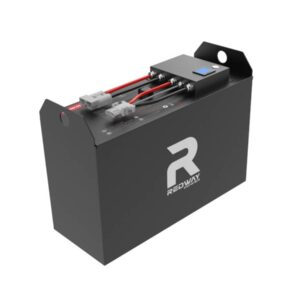What is the average useful life of a forklift?
The average useful life of a forklift is primarily governed by technical specifications and regulatory standards. Under China’s newly implemented GB/T 44679-2024 technical规范, forklifts with rated capacities <10 tons have a 15-year mandatory retirement period, while those ≥10 tons must retire after 20 years. However, actual service life often depends on maintenance practices, operating conditions, and compliance with evolving emissions standards like Tier 4/China Stage III.
How to Maximize Forklift Battery Lifespan
What defines forklift retirement under GB/T 44679-2024?
Mandatory retirement triggers include structural damage exceeding repair thresholds, critical safety system failures, or persistent emissions violations. For example, cracks in load-bearing welds exceeding 15mm depth require immediate decommissioning. Pro Tip: Conduct annual ultrasonic thickness testing on mast channels – corrosion rates exceeding 0.5mm/year signal accelerated aging.

Beyond regulatory timelines, practical retirement decisions balance safety risks against operational economics. The GB/T standard mandates retirement when repair costs exceed 50% of replacement value for three consecutive years. Consider a 2010-vintage 5-ton diesel forklift: if its annual maintenance hits ¥35,000 while a new electric model’s financing costs ¥28,000/year, retirement becomes financially imperative. Transitional phrase: While regulations set boundaries, real-world economics often dictate earlier replacements.
| Retirement Factor | Threshold | Measurement Method |
|---|---|---|
| Structural Deformation | >3% of original dimensions | Laser alignment |
| Engine Emissions | Exceeding Stage III limits | Portable analyzer |
How do maintenance practices extend forklift lifespan?
Proactive predictive maintenance can add 3–5 years to service life. Modern telematics systems track component stress patterns – hydraulic pumps showing >12% efficiency drops trigger preemptive rebuilds. Did you know? Properly regreased mast rollers every 500 operating hours reduce chain wear by 40%.
Implementing ISO 23813:2022 lubrication protocols extends drivetrain longevity significantly. A case study showed warehouse forklifts using synthetic transmission fluids achieved 23,000 hours before overhaul versus 15,000 hours with mineral oils. Transitional phrase: Beyond basic upkeep, advanced condition monitoring transforms lifespan management.
Battery Expert Insight
FAQs
Can retrofits extend a forklift’s service life?
Partial upgrades like electric drivetrain conversions may add 5–8 years, but require recertification per GB/T 17910-2023. Structural components older than 12 years generally disqualify retrofits.
How does duty cycle impact lifespan?
Single-shift operations average 15–20 years, while multi-shift logistics centers see 8–12 years. Prolonged high-intensity use accelerates wear exponentially – hydraulic seals in 24/7 operations fail 3× faster than standard applications.
